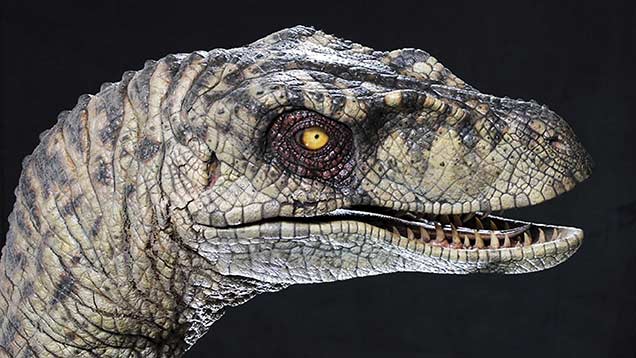Chicken bred with dinosaur ‘snout’
 © Solent News/REX
© Solent News/REX
A team of researchers has genetically engineered a chicken embryo with a “snout” rather than a beak to demonstrate the evolutionary leap dinosaurs took when becoming birds.
The result, according to scientists, was a chick with a snout and palate resembling a velociraptor.
It was found that a “single, simple developmental mechanism” caused the evolutionary leap from snouts to beaks.
Birds are understood to be surviving relatives of dinosaurs, and recreating them, as in the film Jurassic Park, has long been a subject of cultural and scientific fascination.
See also: The genetics that cause hens to peck
The project was led by Yale University palaeontologist Bhart-Anjan Bhuller, who said it was not about simply creating a “dino-chicken”. “Our goal here was to understand the molecular underpinnings of an important evolutionary transition.”
Creating a snout
The first stage was examining both fossils, to determine the structure and shape of dinosaur snouts, and looking at animals that closely resembled them. That helped create a hypothesis for the mechanism by which snouts evolved into beaks.
DNA was extracted from animals such as crocodiles, turtles and lizards to find the specific molecules that generate snout development.
The scientists were then able to inhibit the proteins that cause beak development in chicken embryos, which in turn caused the palatine bone on the roof of the mouth to revert “to its ancestral state”.
‘Unexpected’
“This was unexpected and demonstrates the way in which a single, simple developmental mechanism can have wide-ranging and unexpected effects,” said Prof Bhullar.
“The beak is a crucial part of the avian feeding apparatus, and is the component of the avian skeleton that has perhaps diversified most extensively and most radically. Yet little work has been done on what exactly a beak is, anatomically, and how it got that way either evolutionarily or developmentally.”

